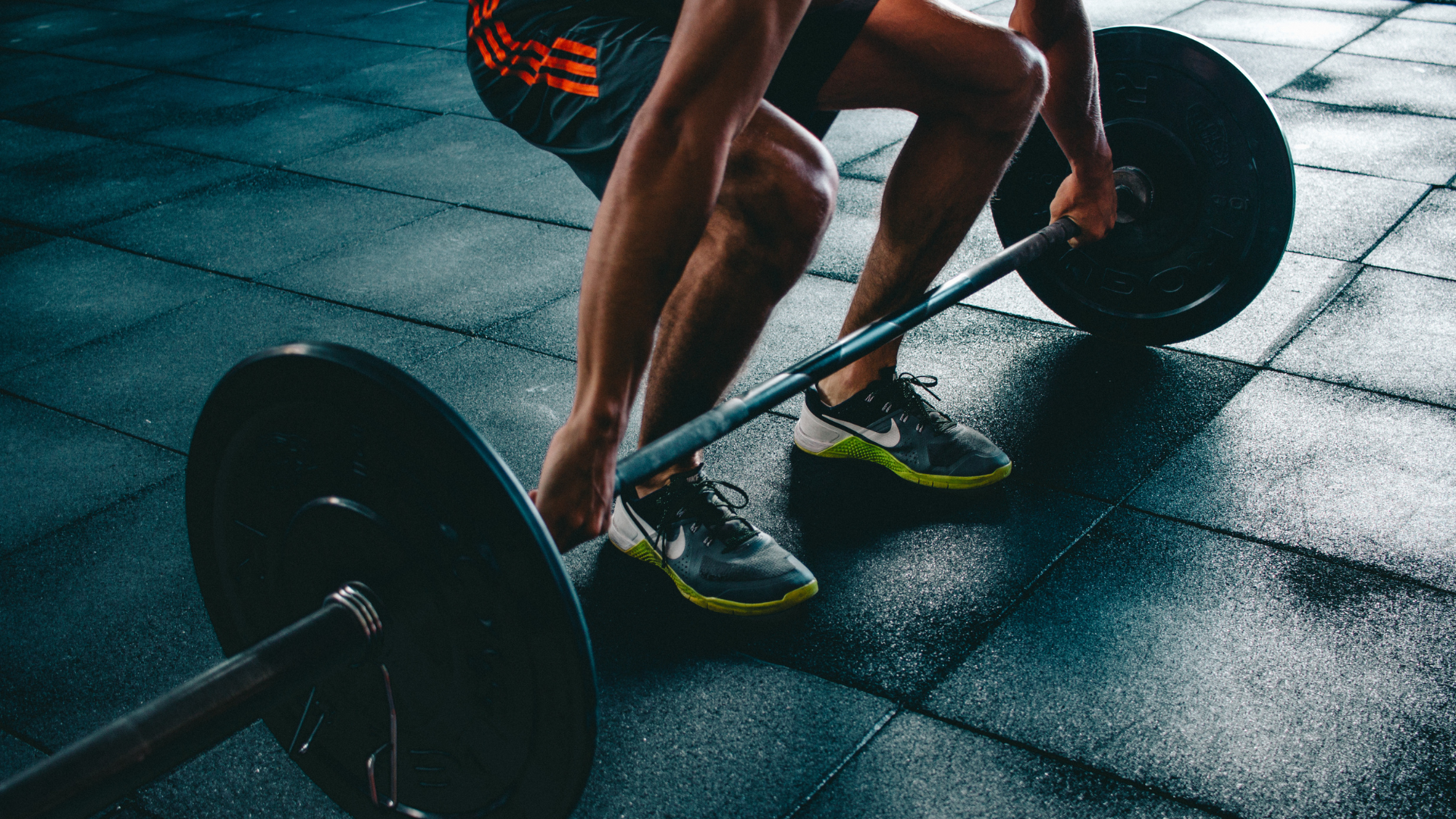Let’s face it—if you’re putting in the time at the gym, you want to make it count, right? Whether you’re chasing gains, upping your cardio game, or just trying to figure out how to not skip leg day (we’ve all been there), this article’s got you covered. We’re talking practical tips, smart strategies, and a little motivation to help you crush your goals. Ready to sweat smarter, not harder? Let’s get into it!

Setting Realistic Fitness Goals
Setting realistic fitness goals is essential for anyone looking to maximize their workout at the gym. One should start by assessing their current fitness level. This can involve:
-
Taking measurements such as weight, body fat percentage, or waist circumference.
-
Assessing physical abilities like how many push-ups, squats, or pull-ups can be done in a row.
-
Acknowledging any limitations due to past injuries or medical conditions.
Once the baseline is established, it's time to create SMART goals. SMART stands for:
-
Specific: Goals should be clear and precise. Instead of saying, "I want to get fit," one should aim for something like, "I want to be able to run 5 miles without stopping."
-
Measurable: Incorporate metrics that can track progress. For example, "I will increase my bench press by 10 pounds in 2 months."
-
Achievable: Set goals that are challenging but possible. Unrealistic expectations can lead to frustration and quitting.
-
Relevant: The goals should align with one's personal interests and fitness desires. If someone enjoys swimming, their goal might be to complete a certain number of laps without a break.
-
Time-bound: Set a deadline to motivate steady progress. For instance, "I will attend yoga classes twice a week for the next 3 months."
Maintaining flexibility is also crucial. Life events, work schedules, or unexpected setbacks can impact one's workout plans. It helps to:
-
Adjust goals as needed to stay motivated.
-
Celebrate small victories to keep up momentum.
-
Seek support from friends or trainers for encouragement and accountability.
Remembering that the journey is just as important as the destination can make achieving fitness goals a rewarding and enjoyable experience.

Creating an Effective Workout Routine
An effective workout routine is key to maximizing gym time and achieving fitness goals. Here are some tips to create one:
-
Set Clear Goals: Start by identifying what you want to achieve, whether it's building muscle, losing weight, improving endurance, or something else. Clear, specific goals keep you focused and motivated.
-
Balance Your Workouts: A well-rounded routine includes a mix of cardiovascular exercises, strength training, and flexibility workouts. This ensures all muscle groups are engaged and promotes overall fitness.
-
Plan Your Week: Divide your workouts throughout the week. For example:
-
Monday: Upper body strength training
-
Tuesday: Cardio and core exercises
-
Wednesday: Lower body strength training
-
Thursday: Rest or light activity like walking or yoga
-
Friday: Mixed cardio and strength training
-
Saturday: Full-body workout
-
Sunday: Rest or active recovery
-
-
Vary Intensity: Don’t push 100% every session. Include high-intensity days, moderate days, and low-intensity or rest days. This approach prevents burnout and promotes recovery.
-
Warm-Up and Cool Down: Always begin workouts with a proper warm-up to get the muscles ready and end with a cool-down stretch to reduce soreness and improve flexibility.
-
Listen to Your Body: Adapt the routine based on how your body feels. If sore or fatigued, adjust the intensity or take a rest day.
-
Track Progress: Keep a workout journal or use an app to track exercises, weights, sets, reps, and any other relevant notes. Tracking lets you see improvements and stay motivated.
-
Stay Consistent: Consistency is key. Stick to your routine as much as possible, but also be flexible enough to adapt to changes in schedule, energy levels, and overall health.
Creating an effective routine tailored to individual goals, preferences, and lifestyle can significantly boost the benefits of gym workouts, making them more enjoyable and productive.

Warming Up Properly
Warming up is essential before diving into any intense workout session. Starting with a proper warm-up helps to increase heart rate, improve blood flow to muscles, and reduce the risk of injury. Here's how to do it:
General Warm-Up
A general warm-up involves engaging in low-intensity activities that gradually increase heart rate and body temperature. Some effective general warm-up exercises include:
-
Jogging or Light Running: Spend 5-10 minutes jogging at a comfortable pace to get the blood flowing.
-
Jumping Jacks or Jump Rope: Perform these exercises for a few minutes to activate various muscle groups.
-
Dynamic Stretching: Incorporate movements like leg swings, arm circles, and walking lunges to improve flexibility and range of motion.
Specific Warm-Up
A specific warm-up focuses on preparing the particular muscles and joints that will be used during the workout. This could include:
-
Bodyweight Exercises: If planning to lift weights, start with lighter weights or bodyweight versions of the exercises planned.
-
Movement Prep: For example, if the session involves squats, go through the squat motion without weight to ensure joints are prepared.
-
Activation Drills: Use resistance bands for exercises like glute bridges or lateral walks to activate key muscle groups.
Tips for Effective Warming Up
-
Keep It Short but Sweet: A warm-up should last about 10-15 minutes—long enough to feel limbered up but not exhausted.
-
Layering Intensity: Start with low intensity and gradually increase it to get your muscles ready without overtaxing them.
-
Consistency Is Key: Always warm up, regardless of the workout intensity or duration.
Benefits of a Proper Warm-Up
-
Injury Prevention: Properly warmed muscles are less likely to experience strains or tears.
-
Improved Performance: Muscles and joints that are primed and ready can enhance overall workout performance.
-
Better Mental Focus: A warm-up routine helps set the mental tone, making it easier to focus on exercise goals.
Ensuring a good warm-up might feel time-consuming, but the benefits far outweigh the few extra minutes spent.

Incorporating Strength Training
Strength training is a vital component of any gym workout. It should be tailored to individual goals and fitness levels for the best results. Here are key strategies for effectively incorporating strength training:
Use Free Weights and Machines
-
Free Weights: Dumbbells, barbells, and kettlebells engage multiple muscle groups and promote functional movement.
-
Machines: These provide support and stability, making them ideal for beginners focusing on form and strength.
Establish a Routine
-
Split Routine: Target different muscle groups on different days (e.g., legs, arms, back) to ensure balanced development.
-
Full-Body Workouts: Combine exercises that work multiple areas, especially for those with limited workout time.
Focus on Compound Movements
-
Squats: Targets legs, glutes, and core.
-
Deadlifts: Engages the entire posterior chain.
-
Bench Press: Strengthens the chest, shoulders, and triceps.
Progressive Overload
-
Increase Weight Gradually: Aim to lift heavier weights over time to build muscle and strength.
-
Adjust Reps and Sets: Modify the number of repetitions and sets periodically to challenge muscles.
Proper Form and Technique
-
Seek Instruction: Use gym resources, such as trainers or classes, to learn correct form.
-
Mirror Use: Check form and alignment during exercises to prevent injuries.
Rest and Recovery
-
Rest Days: Incorporate rest days to allow muscle recovery and growth.
-
Sleep and Nutrition: Ensure adequate sleep and a protein-rich diet to support muscle repair.
Track Progress
-
Workout Journal: Record exercises, weights, reps, and sets to monitor improvements.
-
Set Goals: Establish short-term and long-term goals for motivation.
Incorporating strength training effectively involves selecting the right mix of exercises, following a structured routine, and ensuring proper recovery. By focusing on these elements, individuals can maximize their gym workouts and achieve their fitness goals.

Cardio Workouts: Finding the Right Balance
Cardio workouts are essential for heart health, stamina, and overall fitness. But finding the right balance is key to making the most of your gym sessions. Here are some tips to help:
-
Mix It Up: It’s crucial to include a variety of cardio exercises in your routine. Options like running, cycling, rowing, and jumping rope can keep things interesting and help work different muscle groups.
-
Interval Training: High-Intensity Interval Training (HIIT) is a killer way to maximize your cardio sessions. It involves short bursts of intense exercise followed by a brief period of rest or low-intensity exercise. HIIT can boost metabolism and burn more calories in less time.
-
Steady-State Cardio: Don't underestimate steady-state cardio. These are longer, consistent sessions where you maintain a steady pace, like jogging or brisk walking. It’s great for building endurance and can be less stressful on the joints.
-
Listen to Your Body: Overdoing it can lead to burnout or injury. Always pay attention to how your body feels and allow time for recovery. It's okay to take rest days or opt for a lighter workout if needed.
-
Combine with Strength Training: Balance your cardio with strength training. This combo helps to build muscle, which in turn improves your metabolism. A good rule of thumb is to aim for at least two days of strength training per week.
-
Set Goals: Have clear, achievable goals for your cardio workouts. Whether it's running a certain distance, improving your time, or just staying active consistently, having goals keeps you motivated.
-
Stay Hydrated and Fueled: Drinking enough water and consuming the right nutrients before and after your workouts can improve performance and recovery. Don't skip on these essentials.
Remember, the best cardio workout is one that you enjoy and can stick with consistently. As they say, variety is the spice of life, and that goes for your workout routine too. Keep challenging yourself, but also allow your body the time it needs to rest and recover. With the right balance, you'll really get the most out of your cardio sessions!

Utilizing Gym Equipment Correctly
Using gym equipment the right way is crucial for getting the most out of a workout and avoiding injuries. Here's how:
Know the Basics
-
Read Instructions: Each machine usually has instructions or diagrams. Don't skip them!
-
Start Light: Begin with lower weights or resistance to get a feel for the equipment.
-
Ask for Help: Don't be shy. Gym staff are there to assist and ensure you're using machines properly.
Key Equipment Tips
-
Treadmills:
-
Set a speed and incline that fits your fitness level.
-
Maintain an upright posture and avoid looking down at your feet.
-
-
Ellipticals:
-
Keep your back straight.
-
Don’t lean too much on the handles; let your legs do the work.
-
-
Weight Machines:
-
Adjust the seat and handles to match your body’s height.
-
Focus on slow, controlled movements through the full range of motion.
-
-
Free Weights:
-
Use a mirror to check your form.
-
Start with basic exercises like bicep curls and squats before moving to complex lifts.
-
Hygiene and Safety
-
Wipe Down Equipment: Use the provided sanitizing wipes before and after use.
-
Proper Footwear: Wear shoes with good traction and support.
-
Stay Hydrated: Drink water to keep your body energized.
Benefits of Proper Use
-
Efficiency: Maximize each workout by targeting the right muscles.
-
Safety: Minimizes the risk of strains, sprains, and other gym-related injuries.
-
Confidence: Knowing how to use equipment properly boosts self-assurance and improves the overall gym experience.
By focusing on correct usage and form, gym-goers can make their workouts more effective and enjoyable.

The Importance of Rest and Recovery
Rest and recovery are like the secret sauce in any successful workout plan. Often overlooked, giving the body a break is as crucial as the workout itself. Why? Because without proper rest, the body doesn’t get the chance to rebuild and strengthen.
Benefits of Rest
-
Muscle Repair: Exercise causes tiny tears in muscle fibers. Rest allows these tears to heal, leading to stronger muscles.
-
Prevents Injury: Pushing the body too hard without rest can lead to overuse injuries.
-
Mental Refresh: Workout routines can become monotonous. Taking breaks helps to re-energize mentally.
-
Immune System Boost: Regular rest helps maintain a strong immune system, reducing the risk of illness.
Types of Recovery
-
Active Recovery: Low-intensity exercise, like walking or yoga, helps maintain blood flow without straining the body.
-
Passive Recovery: Pure rest, like a day off from any exercise, lets the body recover without any physical disturbance.
-
Sleep: Good-quality sleep is one of the most effective ways to recover. Eight hours of sleep is often recommended.
Signs You Need a Break
-
Constant Fatigue: If one feels tired all the time, it’s a clear sign the body needs some rest.
-
Decreased Performance: If workouts are becoming less effective, it’s time to listen to the body.
-
Mood Swings: Being irritable or having mood swings often indicates overtraining.
Rest Strategies
-
Scheduled Off Days: Include planned days off in workout routines.
-
Listen to the Body: If feeling overly sore or sluggish, don’t push it.
-
Proper Nutrition: Eating well supports the body's recovery process.
Taking rest days seriously helps make the most out of workout efforts. It turns out, resting isn’t about being lazy; it’s a key strategy for improvement.

Tracking Your Progress
Tracking workout progress is essential for achieving fitness goals. Maintaining a record of your workouts, including exercises, sets, reps, and weights, can help you monitor improvements and identify areas needing attention.
Ways to Track Progress
-
Workout Journal
-
Keeping a physical or digital journal is a straightforward way to log exercises.
-
Note down the date, exercises performed, sets, reps, weights used, and any personal observations.
-
This method allows easy comparison over time.
-
-
Apps and Gadgets
-
There are numerous fitness apps designed to help track workouts, nutrition, and overall progress.
-
Popular apps include MyFitnessPal, JEFIT, and Strong.
-
Fitness trackers and smartwatches, such as Fitbit and Apple Watch, offer integrated tracking.
-
-
Progress Photos
-
Taking regular photos can provide a visual representation of physical changes.
-
Aim for consistent lighting, angles, and attire to ensure accurate comparison.
-
-
Measurements
-
Use a tape measure to track changes in body measurements like arm, waist, hip, and thigh circumference.
-
Perform measurements at regular intervals, such as bi-weekly or monthly.
-
-
Setting Specific Goals
-
Establish short-term and long-term fitness goals to stay motivated.
-
Track your progress towards these goals and adjust as needed.
-
-
Workout Programs
-
Following structured workout programs can offer a clear path for progression.
-
Many programs include tracking sheets or apps to log performances.
-
Benefits of Tracking
-
Motivation:
-
Seeing progress in written form or through photos can boost motivation.
-
-
Accountability:
-
Written records can keep one accountable and consistent with their routine.
-
-
Identify Plateaus:
-
Tracking helps in recognizing when progress stalls, allowing for timely adjustments.
-
-
Adjustments:
-
Modifying workouts based on tracked data ensures continued improvement and prevents overtraining.
-
Tips for Effective Tracking
-
Be honest and accurate in your records.
-
Regularly review your progress and celebrate milestones.
-
Don’t be discouraged by minor setbacks; focus on long-term trends.
-
Mix up your workout routine to keep things fresh and continually challenge yourself.
Tracking progress is a highly personal practice, so find a system that works best and stick with it. The key is consistency and honest reflection on one's growth and areas for improvement.

Staying Motivated and Consistent
Keeping the motivation high is a challenge for every gym-goer, but it’s crucial for long-term success. Here are some practical tips to stay on track:
-
Set Small Goals: Breaking down larger fitness goals into smaller, manageable milestones makes the journey less daunting and more achievable.
-
Track Progress: Maintaining a workout diary or using a fitness app to log workouts helps in visualizing progress, providing a motivating boost.
-
Variety is Key: Avoid monotony by mixing up routines. Trying new exercises or classes keeps things interesting and engaging.
-
Workout Buddy: Having a gym buddy or joining a fitness community adds an element of accountability and friendly competition.
-
Reward Yourself: Celebrate achievements by rewarding yourself with something enjoyable—a new workout outfit, a delicious smoothie, or a rest day.
Even the most motivated individuals face occasional slumps; here are some strategies to overcome these:
-
Scheduled Workouts: Treat gym time like an important appointment. Set a specific day and time, and stick to it.
-
Visual Reminders: Use motivational quotes or fitness images as wallpapers on devices or around the home.
-
Flexible Routine: Life happens; if a workout is missed, don’t stress. Reschedule and get back on track without guilt.
-
Incorporate Fun: Music playlists, podcasts, or audiobooks can make workouts more enjoyable.
-
Online Challenges: Engage in online fitness challenges or virtual races to stay motivated.
In times of low energy or motivation, staying hydrated, eating nutritious meals, and maintaining proper rest can restore energy levels quickly. Lastly, envisioning the end goal and remembering why you started on the fitness journey can reinvigorate the drive to keep moving forward.

Avoiding Common Workout Mistakes
It’s easy to make mistakes while working out, especially when just getting started. Here are some tips to avoid those common pitfalls:
Improper Form
Using the wrong form can lead to injuries and reduce the effectiveness of a workout.
-
Always:
-
Watch instructional videos.
-
Ask trainers for assistance.
-
Use mirrors to check form.
-
Skipping Warm-Up and Cool Down
Warming up prepares muscles for exercise, and cooling down helps with recovery.
-
To warm-up:
-
Do dynamic stretches.
-
Start with light cardio.
-
-
For cooling down:
-
Perform static stretches.
-
Gradually reduce exercise intensity.
-
Overtraining
More exercise isn’t always better. Overtraining can lead to burnout and injuries.
-
Signs of overtraining:
-
Persistent muscle soreness.
-
Decreased performance.
-
Fatigue and irritability.
-
Lifting Too Much Weight
Using weights that are too heavy can compromise form and cause injuries.
-
Start with:
-
Lighter weights.
-
Gradually increase as strength improves.
-
Not Staying Hydrated
Dehydration impacts performance and recovery.
-
Remember to:
-
Drink water before, during, and after workouts.
-
Keep a water bottle handy.
-
Inconsistent Workouts
Consistency is key to seeing progress.
-
Tips to stay consistent:
-
Set achievable goals.
-
Create a workout schedule.
-
Mix up routines to keep things interesting.
-
Ignoring Pain and Discomfort
Pain is a sign that something might be wrong.
-
If experiencing pain:
-
Stop the workout immediately.
-
Seek medical advice if necessary.
-
Lack of Proper Nutrition
Nutrition plays a vital role in supporting workouts and recovery.
-
Focus on:
-
Balanced meals.
-
Adequate protein intake.
-
Post-workout snacks.
-
Avoiding these common mistakes can lead to more effective and safer workouts.

Customizing Your Workout to Fit Your Needs
Everyone has unique fitness goals, and customizing a workout plan to fit individual needs is crucial. It'll help maximize results and maintain motivation. Here are a few tips to tailor workouts effectively:
Understand Your Goals
First and foremost:
-
Identify whether the goal is weight loss, muscle gain, or improving endurance.
-
Determine the target areas that need more focus.
Choose the Right Exercises
Selecting exercises that will best help in achieving these goals is important:
-
For weight loss: Incorporate high-intensity interval training (HIIT) and cardio exercises like running, cycling, or rowing.
-
For muscle gain: Focus on weightlifting and resistance training exercises such as squats, deadlifts, and bench presses.
-
For endurance: Emphasize cardiovascular exercises and activities like swimming, running, or circuit training.
Create a Balanced Routine
A balanced routine shouldn't be underestimated:
-
Warm-Up: Always start with a 5-10 minute warm-up to prep the body.
-
Strength Training: At least two days a week to build muscle.
-
Cardio: Include at least 150 minutes of moderate-intensity cardio or 75 minutes of high-intensity cardio per week.
-
Flexibility and Balance: Dedicate time to yoga or stretching exercises.
Adjust the Workout Intensity
Pay attention to how the body feels and adjust intensity accordingly:
-
Listen to the Body: If something hurts or feels too strenuous, modify or switch exercises.
-
Progressive Overload: Gradually increase weights, reps, or duration to continuously challenge muscles.
Schedule Rest Days
Rest is as vital as the workout itself:
-
Ensure to take at least one or two rest days per week, allowing the muscles to recover and preventing overtraining.
Track Progress
Keep a record of workouts:
-
Track weights lifted, reps completed, and improvements noticed.
-
Adjust the plan every few weeks to keep improving and avoid plateaus.
Seek Professional Help
Sometimes, expert advice makes all the difference:
-
Consult a personal trainer if new to fitness or needing guidance.
-
Nutritionists can also provide valuable advice geared towards achieving specific goals.
Customizing the workout to fit personal needs not only makes the journey enjoyable but also leads to better and faster results.
And there you have it—your roadmap to making every gym session count! Remember, it’s not just about working harder but working smarter. Stay consistent, listen to your body, and don’t be afraid to mix things up to keep it fresh and fun. Progress takes time, so celebrate those small wins along the way. Now, go crush your next workout and show that gym who’s boss!



